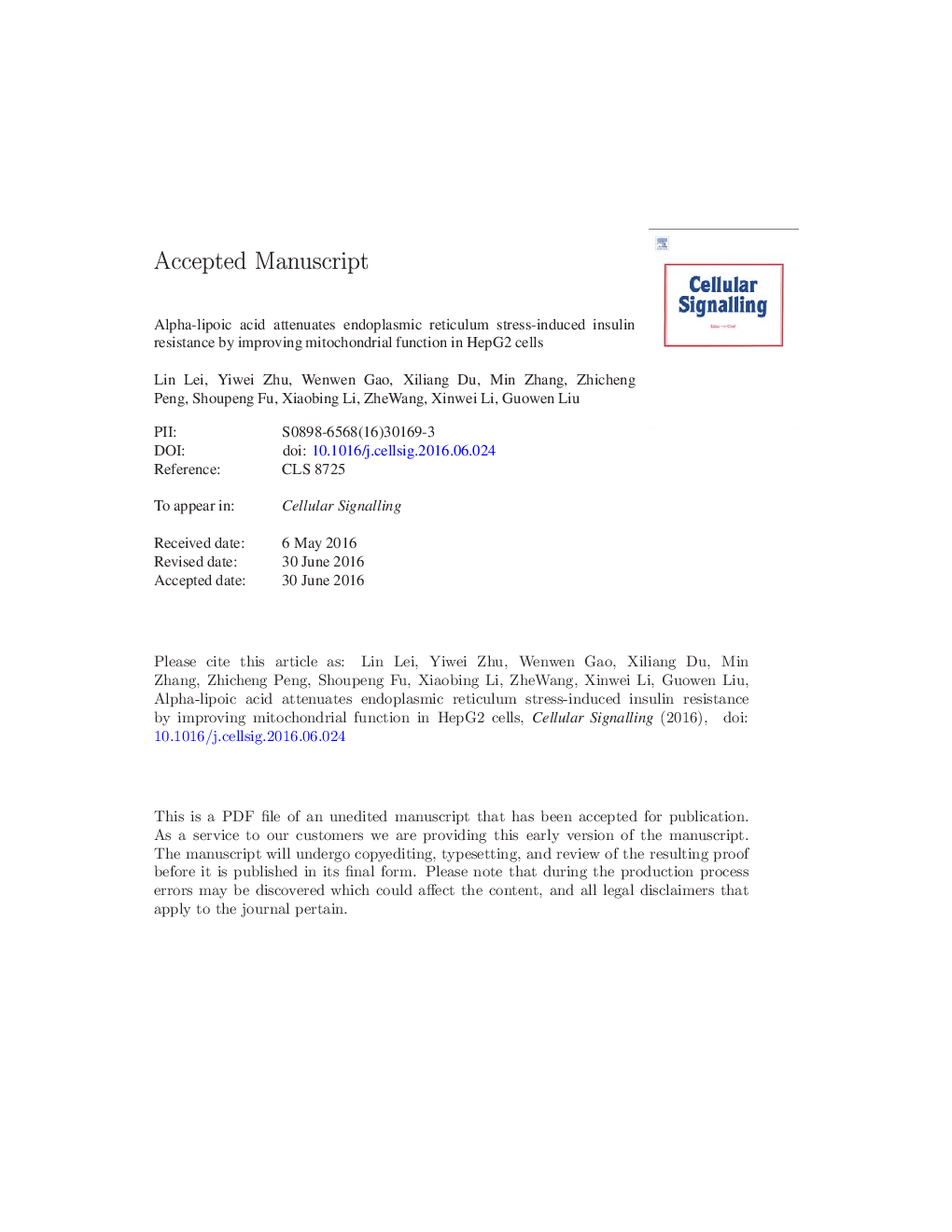| Article ID | Journal | Published Year | Pages | File Type |
|---|---|---|---|---|
| 10814939 | Cellular Signalling | 2016 | 36 Pages |
Abstract
Alpha-lipoic acid (ALA) has been reported to have beneficial effects for improving insulin sensitivity. However, the underlying molecular mechanism of the beneficial effects remains poorly understood. Endoplasmic reticulum (ER) stress and mitochondrial dysfunction are considered causal factors that induce insulin resistance. In this study, we investigated the effect of ALA on the modulation of insulin resistance in ER-stressed HepG2 cells, and we explored the potential mechanism of this effect. HepG2 cells were incubated with tunicamycin (Tun) for 6 h to establish an ER stress cell model. Tun treatment induced ER stress, mitochondrial dysfunction and insulin resistance. Interestingly, ALA had no significant effect on ER stress signals. Pretreatment of the ER stress cell model with ALA for 24 h improved insulin sensitivity, restored the expression levels of mitochondrial oxidative phosphorylation (OXPHOS) complexes and increased intracellular ATP production. Moreover, ALA augmented the β-oxidation capacity of the mitochondria. Importantly, ALA treatment could decrease oligomycin-induced mitochondrial dysfunction and then improved insulin resistance. Taken together, our data suggest that ALA prevents ER stress-induced insulin resistance by enhancing mitochondrial function.
Keywords
PI3KMitochondria-associated ER membranesNAFLDOligIP3R1oligomycintunicamycinOCRCpt1αRLUTUNT2DMIKKXBP1UPRDMEMJnkHepG2OXPHOSIRSqRT-PCRALAPPARαC/EBP homologous proteinc-Jun N-terminal kinaseDulbecco's modified Eagle MediumIRE1αMAMsPKB/AKTinositol-requiring enzyme 1αMitochondrial dysfunctionER stressEndoplasmic reticulum (ER) stressEndoplasmic reticulum stressalpha-lipoic acidinsulin receptor substratenon-alcoholic fatty liver diseaseCHOPType 2 diabetes mellitusRespiratory chainHepG2 cellsPhosphatidylinositol 3-kinaseOxidative phosphorylationInsulin resistanceOxygen consumption ratesrelative luminescence unitsquantitative polymerase chain reactionUnfolded protein responseX-box-binding protein 1glucose-regulated protein 78protein kinase Bcarnitine palmitoyltransferase 1α
Related Topics
Life Sciences
Biochemistry, Genetics and Molecular Biology
Biochemistry
Authors
Lin Lei, Yiwei Zhu, Wenwen Gao, Xiliang Du, Min Zhang, Zhicheng Peng, Shoupeng Fu, Xiaobing Li, Wang Zhe, Xinwei Li, Guowen Liu,
